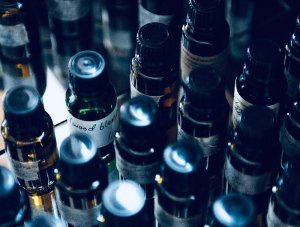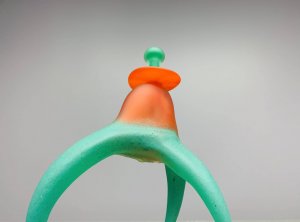Despite the fact that the use and production of perfumes, colognes, aftershaves and other scented products have proliferated both the world of advertising and the purchases of the modern consumer, it’s interesting how many misconceptions concerning the art of fragrance creation have emerged over the years.
So our master perfumers and key team members decided to take a [brief] break from stretching the boundaries of industrial science with their fragrant, innovative formulations and spend a moment to debunk a few of the biggest myths about fragrance design.
Modern Fragrance and Fragrance Design
Most consumers wear some sort of fragrance every day of their lives, and their chosen fragrance is always integral to both their individual expression and their wardrobe choices. All fragrances are blends of layers of top, middle and base notes that mesh to become a complete sensory experience. Individually, each note corresponds to a different aspect of the scent.

Since the turbulent days of World War II, perfume creation and fragrance design have undergone many technological advances including: compound design, synthesis, the natural evolution of tastes and styes and the emergence of new categories that define and describe modern scents. This includes: Bright Floral; Green; Oceanic/Ozone; Citrus or Fruity and Gourmand.
Some Fragrance Industry Statistics Statistics
According to recent reports, the global fragrances and perfumes market was valued at USD 52.7 billion in 2018 and is expected to be worth USD 72.3 billion by 2024, registering a CAGR of 5.5% during the forecast period, 2019 to 2024.
This market is gaining significant traction due to the burgeoning trend in personal grooming, the increase in consumer spending on luxury fragrances. Other factors include: rapid urbanization, increasing population and aggressive advertising by the manufacturers. In North America alone, the market is expected to exceed 7 billion by the year 2020.
The Ten Myths Associated With Fragrance Design
1. Fragrance Design Is An Easy Process
Despite the proliferation of websites that detail how to create perfume and make it look as elementary as Sherlock Holmes regarded crime solutions to his pal, Dr Watson, the art of fragrance design is extremely complex and requires a comprehensive approach that includes but is not limited to: artistic aptitude, consumer insight, technical ingenuity and creative vision. The ultimate fragrance design is one that produces a complete sensory experience and not just a beautiful scent.

2. Fragrance Should Be Stored Correctly To Preserve The Scent
While many people believe that there are strict and precise measures that should be taken when it comes to storing favorite scents, usually the bottle in which the fragrance comes in protects it and keeps it smelling as the manufacturer intended for as long as possible. There are a number of tips that can help the life of any given perfume, and some of these include: keeping the bottle away from direct sunlight, storing the fragrance in the bathroom or in a cool, dark area. Certain temperatures or humidity can affect the oils in the perfume or cologne and alter the original scent.
3. A Quality Fragrance Will Always Cost More
Although it is a very common belief that the more expensive a fragrance is, the better it will smell, this isn’t necessarily the case. That old saying about “getting what you pay for” is generally true, but in the case of celebrity fragrances for example, the consumer is paying for the particular brand rather than the quality of the perfume itself. In addition, sometimes the more affordable perfumes last longer on individual skin types and smell better over a longer period of time.
4. The Best Way To Smell A Fragrance Is On A Test Card
Test cards infused with scents are often provided by department stores as a way to experiment with how a particular fragrance will impact consumers. Many believe that this is the best way to interact with a new fragrance, but this is a misconception. The only true way to know how a fragrance will react on skin is to smell it when it is sitting on the skin. The reasoning behind this lies in the fact fragrances are often altered when blended with the natural oils of an individual’s skin. This is also the reason why the same scent can smell differently on diverse people.

5. Fragrance Design Is A Solitary Endeavor
Although touches of individual genius may be present in the creation of a particular scent, the art of successful fragrance design is always collaborative. Behind that unforgettable smell is a team of marketers, formulators, chemists, regulatory and production professionals, such as our perfume masters at Alpha Aromatics. A lucrative and memorable scent is always one that coalesces the marketer’s vision with consumer expectations.
Explore the importance of perfume bottle design.

6. Scent Should Always Be Rubbed Into The Skin
Rubbing wrists together after perfume is applied to them is often believed to help the fragrance absorb into the skin and improve its overall performance by warming it up. This is not true, albeit this method does break down the beads of perfume and intensify the scent for a very short period of time.
Ultimately, however, breaking down these oils directly after applying the fragrance actually reduces the staying power of the scent. The best way to increase the staying power of any scent is to let it rest on your skin and absorb naturally. In this manner, the oils will break down organically throughout the day and keep the fragrance smelling sweeter for a longer period of time.
7. Fragrance Design Is Exclusionary
It is an enduring myth that fragrance design is an exclusive process that is limited to one particular market category. This couldn’t be further from the truth as many formulations, particularly those we create, are used to create a variety of scented products across a wide range of categories and along a diverse cross-section of the consumer population.

8. Fragrance Design Is Abstract
Even though an artistic vision is integral to fragrance design, many view this process as an intangible art form. Perfumers are certainly artists but they are also chemists who transform fragrance design into a tangible scent.
Each element is utilized first in isolation and then in synergy with other materials to create a series of different versions or modifications, each of which is evaluated by how well it meets the marketer’s specifications. The “right” and final formula must also fulfill the client’s specified requirements for price, performance, endurance, stability and safety.
9. Perfume Is Best Applied When Dispersed Through The Air
Spraying a fragrance into the air and simply walking through it wastes the product and can make it much less effective. Applying a scent by misting it directly onto the warmer areas of the skin; namely, behind the ears, wrists and neck, allows the oils to fall away slowly over the course of the day.

10. The Stronger A Scent Is The Better It Will Smell
One of the most enduring myths concerning fragrance design is that the higher the concentration of oils in a particular formulation, the better the ultimate smell will be. The truth is that such fragrances may end up smelling stronger, but they will not necessarily smell better. In fact, it is often prudent when using scents that are very potent to use less than that which might be dispersed with a milder scent.
Alpha Aromatics and Fragrance Design
We are an internationally renowned fragrance design and manufacturing company with a long and very aromatic past that began more than seven decades ago.
Headquartered in Pittsburgh, Pennsylvania, we offer customized scents for any type and size of commercial enterprise, whether it be a start-up or a well-known brand name. Our fine perfume compositions, personal care products, natural and organic fragrances, candles and diffusers are the finest on the fragrance market today.
 (Our Master perfume, Roger Howell)
(Our Master perfume, Roger Howell)
Our cutting edge technologies that push the boundaries of industrial science every single day are the forces behind our many diverse offerings. We specialize in synthetic, natural and organic fragrance sectors that aid all industries in improving their bottom line via the deployment of fragrance creation as well as scent branding.
We strive to innovate and nurture creativity, while priding ourselves on adhering to the highest levels of perfumery ethics and regulatory standards in the world.
In conclusion
Perfume creation is a magical, elusive and erotic art form that is big business. We live in a fragrant age where scent is everywhere, influencing our memories and our actions as consumers. A tiny piece of human history thrives deep within every fragrance design which tells a thousand tales without words. Therein lies its invisible power that far exceeds conventional usage as a fashion accessory.
Perception is shadowy, but perfume serves as a messenger, projecting that which the wearer wants others to perceive, which is highly empowering. Breaking through the barriers of myths concerning fragrance design can lead a brand to new heights, creating a more commanding presence and a message that speaks to a target audience.
Learn more about our fragrance creation experts, or give them a call today and find out what our fragrance designs can do for your company brand and vision.
Final thought about fragrance: A fragrance is a veritable story, told and explained in scent, in notes, in impressions. It’s a score based on the emotions of each instant, a captivating music of the senses.~ Alber Elbaz
Our amazing team members and credentialed perfumers were recently featured in a local ABC news piece about the power of scent. Give it watch, or explore our blog for more articles on the process of designing fragrances for the commercial market.
 alpha aromatics®
alpha aromatics®